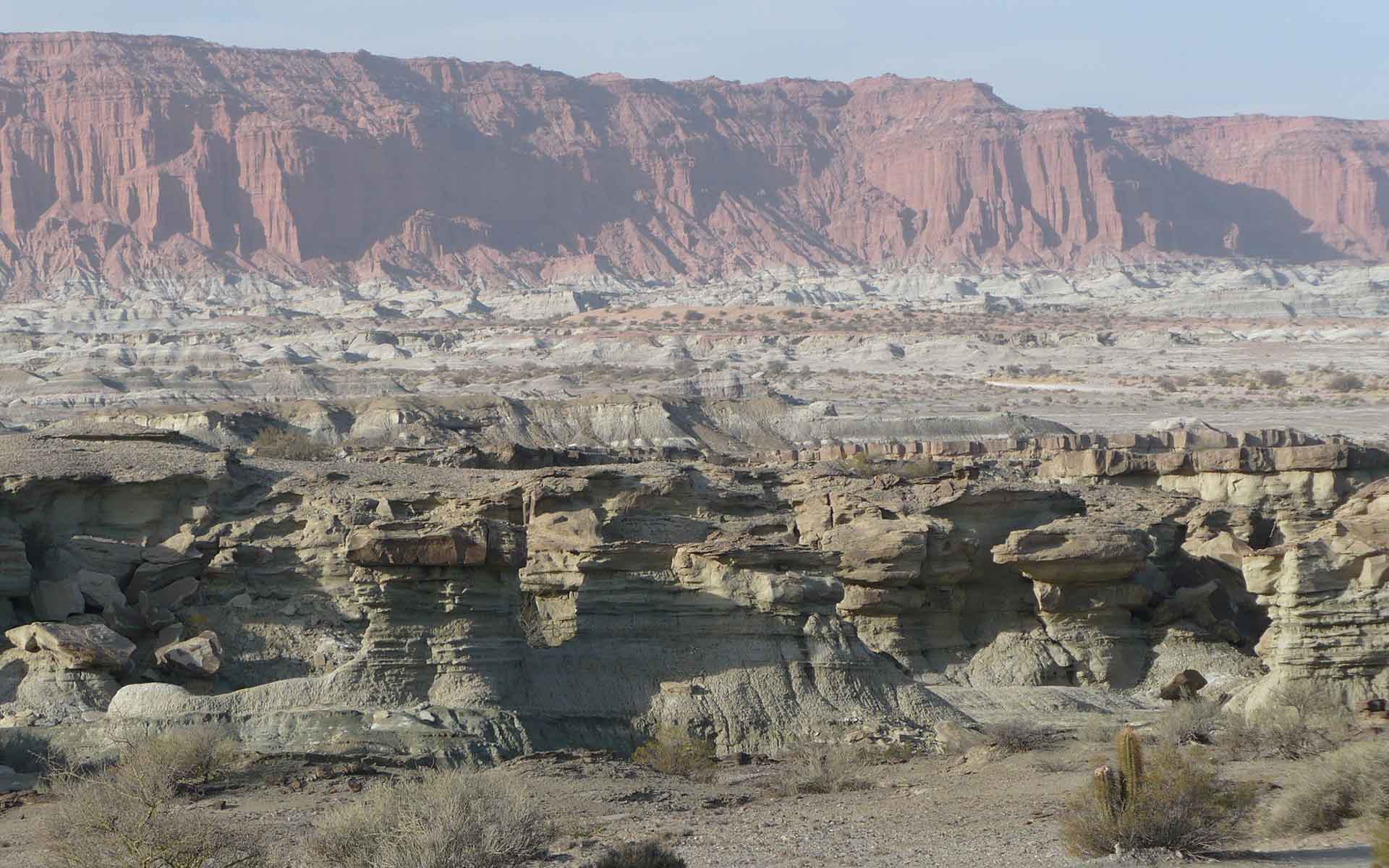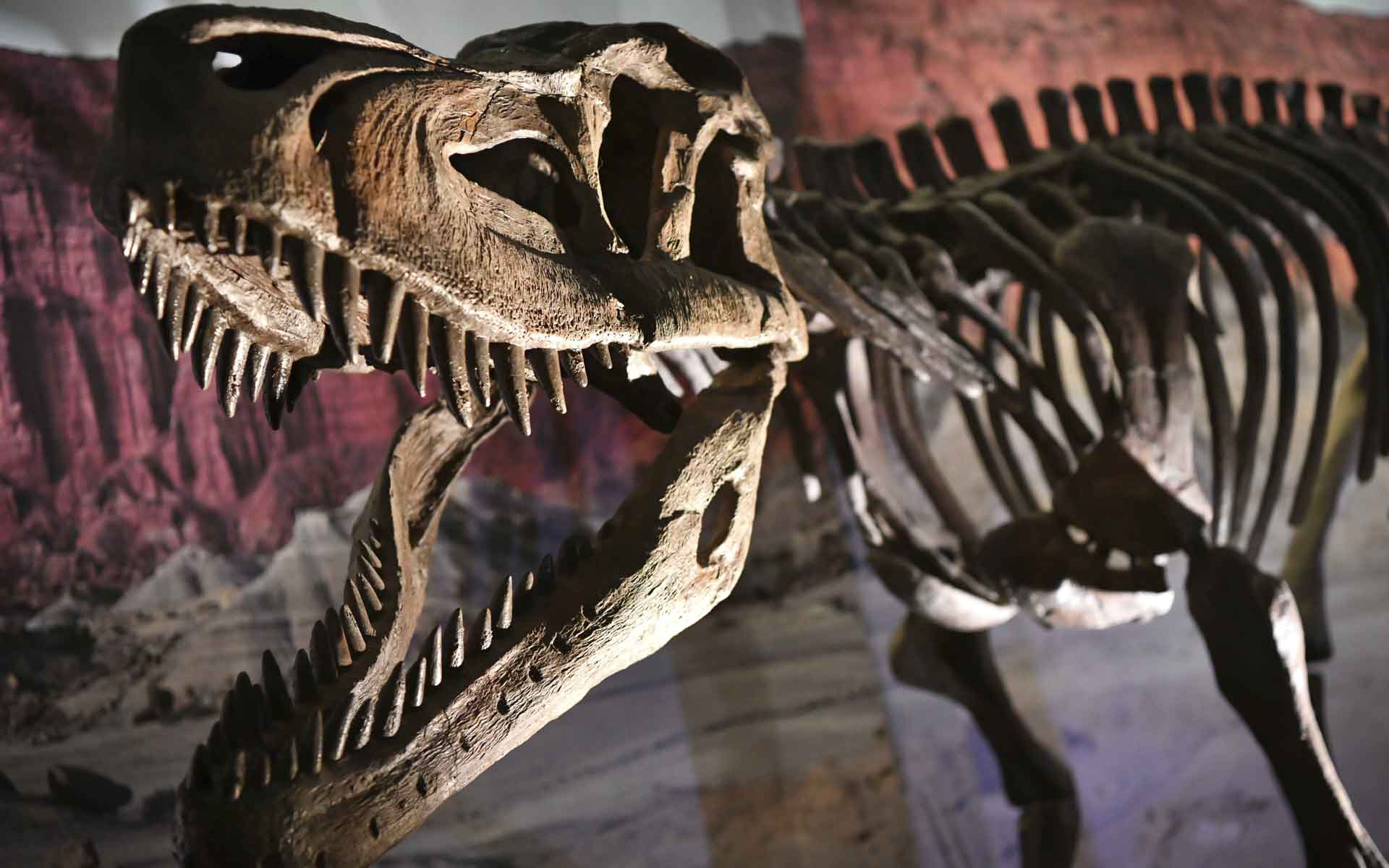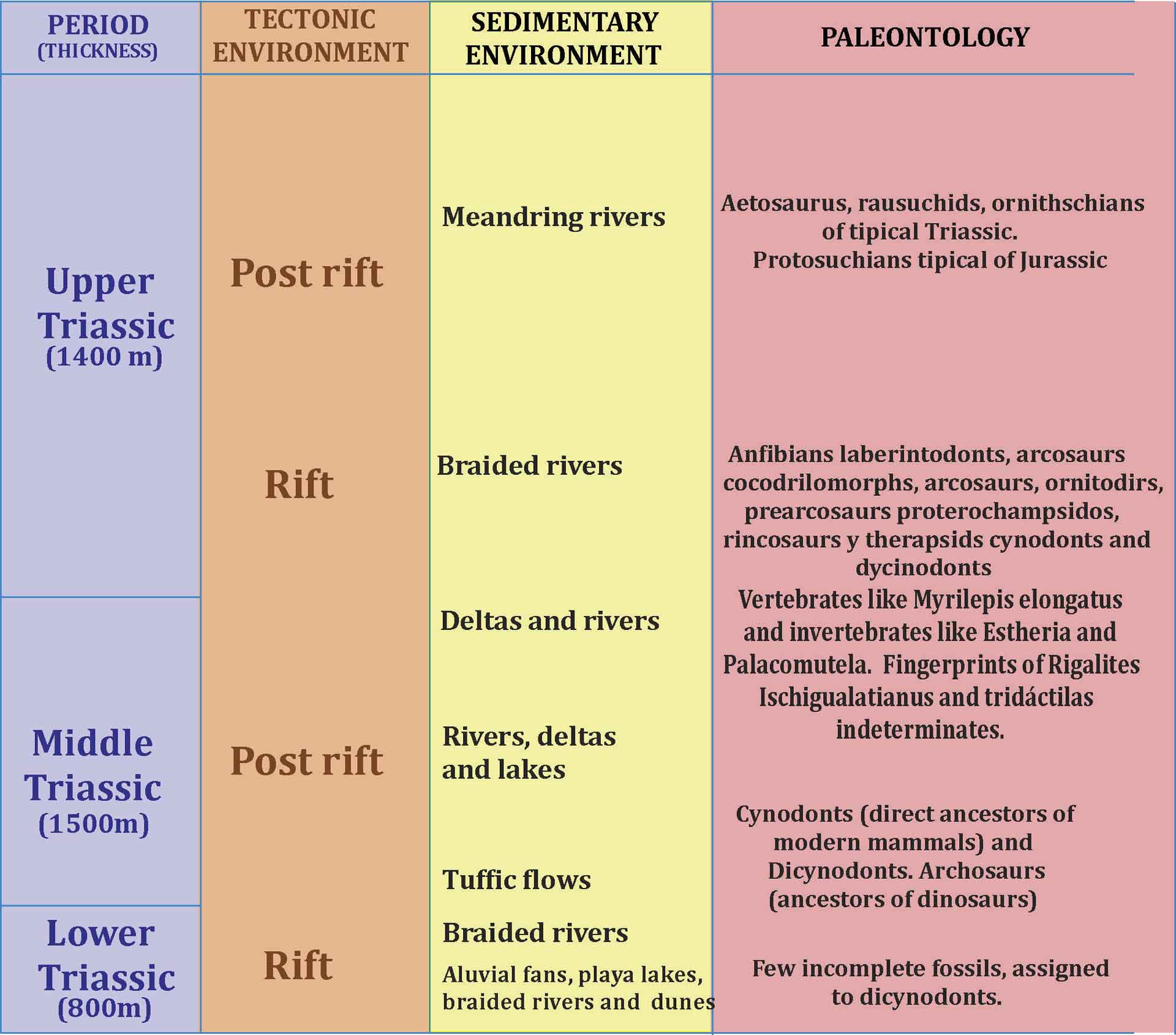
Appearance presented by the Ischigualasto Formation, gray in color. In the background, outcrops of the Los Colorados Formation constituting the so-called Barrancas Coloradas.
Geological Period
Triassic
Main geological interest
Paleontology
Stratigraphy and sedimentology
Location
Province of San Juan, Argentina
30°09’48”S, 067°50’32”W
Appearance presented by the Ischigualasto Formation, gray in color. In the background, outcrops of the Los Colorados Formation constituting the so-called Barrancas Coloradas.
Continuous fossil record that records the origin of dinosaurs and evolution for first mammals.
The Ischigualasto-Villa Unión basin (Stipanicic and Bonaparte, 1972) is the only place in the world with a complete succession of Triassic continental strata. Its outcrops in Ischigualasto have attracted the interest of geologists and paleontologists around the world because its fossils record the origin of the dinosaurs and the evolution of the first mammals. Its natural beauty makes it an important attraction for tourists. The area has been protected by the Province of San Juan since 1971. It was declared an Archaeological, Paleontological and Ecological Site in 1995 and a World Heritage Site in 2000 (Dingwall, 2000).
- Geological description
The continuous succession of Triassic strata exposed in the park was deposited in an open basin 251 million years ago. The continuous sedimentation allowed for a comprehensive record in that environment of the evolution of primitive turtles and the replacement of therapsids by archosaurs during the Early Triassic (Benton, 1993). Moreover, fossils of the oldest and most primitive dinosaurs known to date (Sereno and Novas, 1992) occur in the Upper Triassic along with therapsids, cynodonts and dicynodont types. The latter constitute the category of mammalian reptiles, from which mammals later evolved. The formation of the Andes Mountains uplifted this ancient basin to 1,300 meters above sea level, exposing the rocks to erosion that carved out a particular landscape known as “Valle de la Luna” (Valley of the Moon). The brick red, greenish and ocher sandstones are exposed in cliffs up to 200 meters high where the different strata and their internal structures highlighted by wind abrasion can be distinguished. Gigantic columns, thin obelisks, unusual rock shapes, ravines and gorges complete this spectacular landscape.
- Scientific research and tradition
Victorino Herrera discovered the fossil deposit in 1927. In 1940, Dr. Joaquin Frenguelli discovered that the largest paleontological sample from the Triassic lay there. The paleontologist William Sill was the architect of its declaration as a World Heritage Site by UNESCO in the year 2000.
- Reference
Benton, M.J. (1993) ‘Late Triassic Extinctions and the Origin of the Dinosaurs’, Science, 260(5109), pp. 769–770. Available at: https://doi.org/10.1126/science.260.5109.769.
Dingwall, P. (2000) World Heritage Nomination IUCN Technical Evaluation. Ischigualasto Provincial Park-Talampaya National Park (Argentina). IUCN, Gland, Switzerland.
Milana, J. and Alcober, O. (1994) ‘Modelo tectosedimentario de la cuenca triásica de Ischigualasto (San Juan, Argentina)’, Revista de la Asociacion Geologica Argentina, 49, pp. 217–235.
Sereno, P.C. and Novas, F.E. (1992) ‘The Complete Skull and Skeleton of an Early Dinosaur’, Science, 258(5085), pp. 1137–1140. Available at: https://doi.org/10.1126/science.258.5085.1137.
Stipanicic, P. and Bonaparte, J. (1972) ‘Cuenca triásica de Ischigualasto-Villa Unión (provincias de San Juan y La Rioja).’, in A. Leanza (ed.) Geología Regional Argentina. Córdoba: Academia Nacional Ciencias, pp. 507–536.
- Author(s)
Carlos Nelson Dal Molin.
Geological and Mining Survey of Argentina (SEGEMAR).
Fernando Miranda.
Geological and Mining Survey of Argentina (SEGEMAR).


